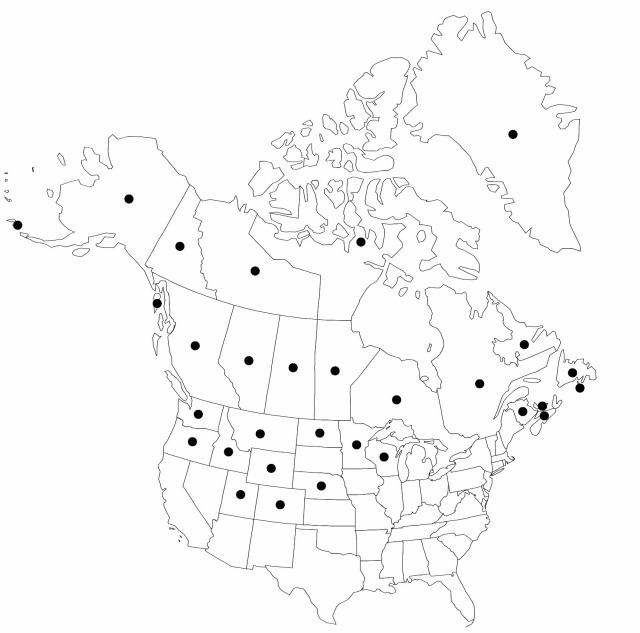Difference between revisions of "Eriophorum chamissonis"
in C. F. Ledebour, Fl. Altaica 1: 70. 1829.
FNA>Volume Importer |
imported>Volume Importer |
||
| (One intermediate revision by the same user not shown) | |||
| Line 1: | Line 1: | ||
{{Treatment/ID | {{Treatment/ID | ||
|accepted_name=Eriophorum chamissonis | |accepted_name=Eriophorum chamissonis | ||
| − | |accepted_authority=C. A. Meyer | + | |accepted_authority=C. A. Meyer |
|publications={{Treatment/Publication | |publications={{Treatment/Publication | ||
|title=in C. F. Ledebour, Fl. Altaica | |title=in C. F. Ledebour, Fl. Altaica | ||
| Line 8: | Line 8: | ||
}} | }} | ||
|common_names=Russett (Rusty) cotton-grass;linaigrette de Chamisso | |common_names=Russett (Rusty) cotton-grass;linaigrette de Chamisso | ||
| + | |special_status={{Treatment/ID/Special_status | ||
| + | |code=F | ||
| + | |label=Illustrated | ||
| + | }} | ||
|basionyms= | |basionyms= | ||
|synonyms={{Treatment/ID/Synonym | |synonyms={{Treatment/ID/Synonym | ||
| Line 61: | Line 65: | ||
-->{{#Taxon: | -->{{#Taxon: | ||
name=Eriophorum chamissonis | name=Eriophorum chamissonis | ||
| − | |authority=C. A. Meyer | + | |authority=C. A. Meyer |
|rank=species | |rank=species | ||
|parent rank=genus | |parent rank=genus | ||
| Line 74: | Line 78: | ||
|publication title=in C. F. Ledebour, Fl. Altaica | |publication title=in C. F. Ledebour, Fl. Altaica | ||
|publication year=1829 | |publication year=1829 | ||
| − | |special status= | + | |special status=Illustrated |
| − | |source xml=https:// | + | |source xml=https://bitbucket.org/aafc-mbb/fna-data-curation/src/2e0870ddd59836b60bcf96646a41e87ea5a5943a/coarse_grained_fna_xml/V23/V23_30.xml |
|genus=Eriophorum | |genus=Eriophorum | ||
|species=Eriophorum chamissonis | |species=Eriophorum chamissonis | ||
Latest revision as of 20:39, 5 November 2020
Plants colonial from long-creeping rhizomes. Culms solitary or few together, somewhat trigonous, (20–)30–70(–80) cm, stout, to 1.5(–4) mm diam. basally; basal sheaths persistent, brown to purplish brown, septate-nodulose. Leaves: blades filiform, trigonous-channeled, (2–)3–10 cm × 1–2 mm; distal 1–2 leaf sheaths bladeless, inflated. Inflorescences: involucral bracts absent. Spikelets solitary, erect, globose in fruit, 1.5–2(–4) cm; scales blackish to purplish brown; proximal empty scales not more than 7, obovate or trigonous-obovate, 4–20 mm, margins white or paler, as wide as dark portion, apex blunt; distal scales obovate to ovate-lanceolate, margins hyaline, 1 mm wide or wider. Flowers: perianth bristles 10 or more, red-brown to white, 20–40 mm, smooth; anthers (0.6–)1.5–3 mm. Achenes oblong-obovoid, 2–2.7 mm, as wide as long, apex apiculate (0.3–0.5 mm). 2n = 58.
Phenology: Fruiting summer.
Habitat: Peat, bogs, marshes, muskegs
Elevation: 0–3000 m
Distribution

Greenland, St. Pierre and Miquelon, Alta., B.C., Man., N.B., Nfld. and Labr., N.W.T., N.S., Nunavut, Ont., P.E.I., Que., Sask., Yukon, Alaska, Colo., Idaho, Minn., Mont., Nebr., N.Dak., Oreg., Utah, Wash., Wis., Wyo., Eurasia.
Discussion
The Eriophorum chamissonis complex contains taxa based mainly on stem size and bristle color (M. Raymond 1954). Much of the variation appears to be continuous with abundant intermediates; experimental studies are needed to determine the biological basis of the variation.
Selected References
None.
